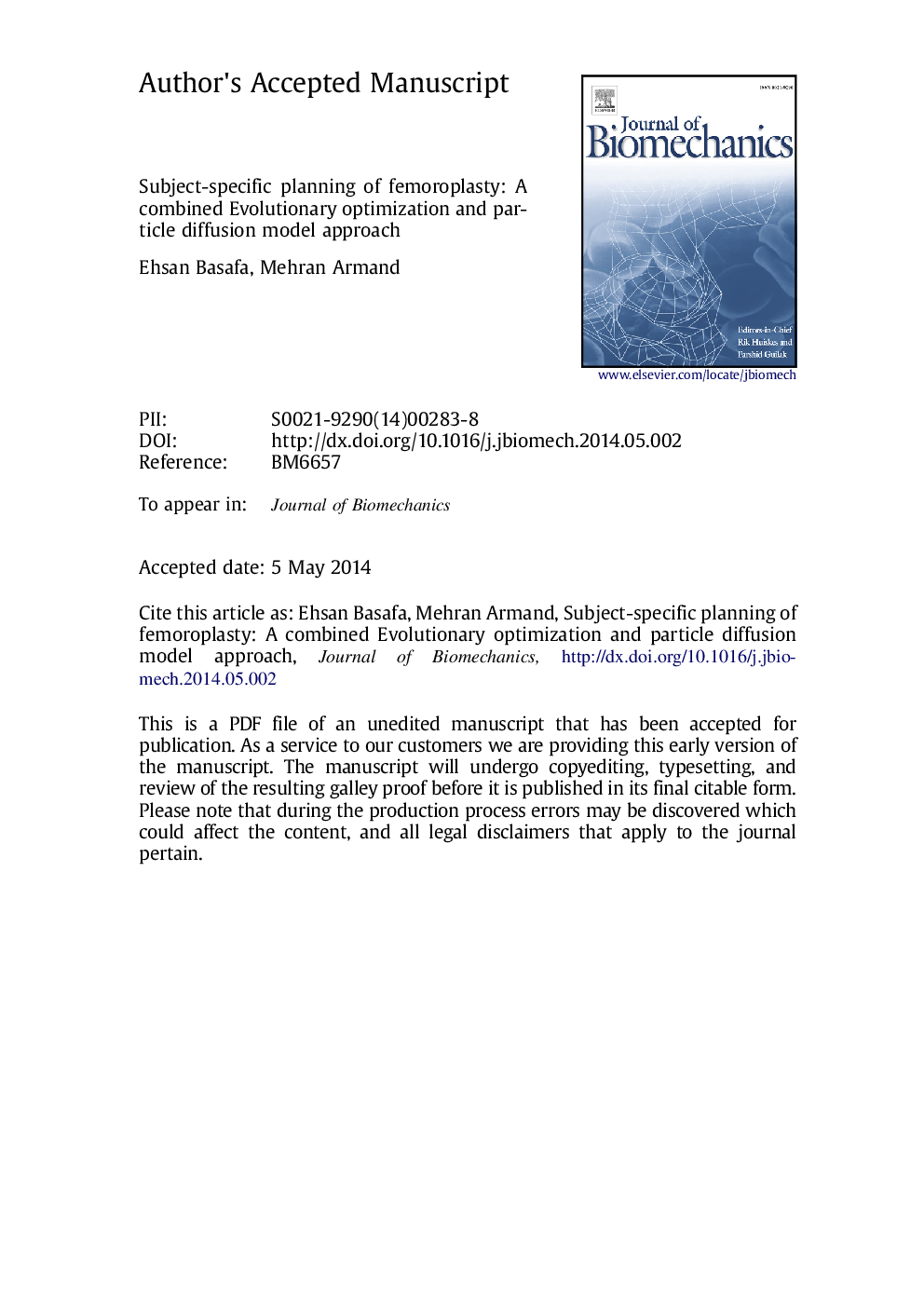| Article ID | Journal | Published Year | Pages | File Type |
|---|---|---|---|---|
| 10431753 | Journal of Biomechanics | 2014 | 29 Pages |
Abstract
A potential effective treatment for prevention of osteoporotic hip fractures is augmentation of the mechanical properties of the femur by injecting it with agents such as (PMMA) bone cement - femoroplasty. The operation, however, is only in research stage and can benefit substantially from computer planning and optimization. We report the results of computational planning and optimization of the procedure for biomechanical evaluation. An evolutionary optimization method was used to optimally place the cement in finite element (FE) models of seven osteoporotic bone specimens. The optimization, with some inter-specimen variations, suggested that areas close to the cortex in the superior and inferior of the neck and supero-lateral aspect of the greater trochanter will benefit from augmentation. We then used a particle-based model for bone cement diffusion simulation to match the optimized pattern, taking into account the limitations of the actual surgery, including limited volume of injection to prevent thermal necrosis. Simulations showed that the yield load can be significantly increased by more than 30%, using only 9Â ml of bone cement. This increase is comparable to previous literature reports where gross filling of the bone was employed instead, using more than 40Â ml of cement. These findings, along with the differences in the optimized plans between specimens, emphasize the need for subject-specific models for effective planning of femoral augmentation.
Related Topics
Physical Sciences and Engineering
Engineering
Biomedical Engineering
Authors
Ehsan Basafa, Mehran Armand,
